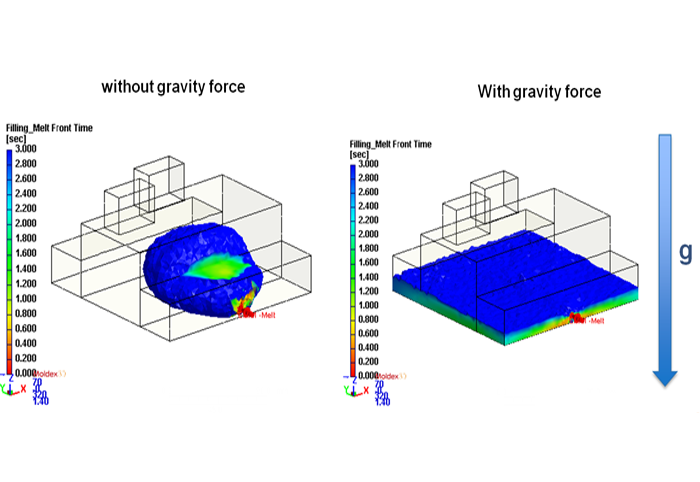
Understanding comprehensive foam simulations
ESPECIALLY FOR OUR USERS
Chemical foaming is a process in which the cavity is filled by the foaming material. The gas that forms the foam structure is produced by a chemical reaction during the process. Polyurethane (PU) foaming is a common process in this regard. Polyurethane foam is characterized by having a high flexibility and elasticity, so this process can be used in a wide variety of industries, such as automotive (e.g. dashboard, steering wheel, seat), temperature control (e.g. insulation), footwear (e.g. soles) and medical (e.g. bed mattresses). The biggest challenge in foaming is to fill the cavity with the amount of material so that on the one hand, it is completely filled and, on the other hand, the desired foam structure is also produced. If the cavity is not completely filled, this can normally be attributed to 3 factors:
_ too little material
_ insufficient amount of foam gas
_ too high curing speed
If too much material is used, this can also lead to over-molded parts and material is wasted unnecessarily.
The Moldex3D PU Chemical Foaming module supports polyurethane foam analysis and simultaneously considers curing and foam kinetics. With the polyurethane foam injection molding simulation, the filling and foaming behavior of polyurethane can be predicted more accurately and the material quantity and process conditions can be optimized accordingly.
Via process parameters such as shot weight, gas volume fraction, and shot volume, Moldex3D is able to determine optimal parameters for the process. Furthermore, Moldex3D takes into account the foaming time and curing kinetics of the material. After the calculation, the results such as flow front time, density, temperature development, curing, cell sizes, cell density and final warpage can be analyzed.
In polyurethane foaming, other important factors such as gravity, venting points, water (blowing agent) concentration and rotation must be taken into account to influence the foaming behavior. Gravity must be considered in the simulation because low-viscosity polyurethane tends to spread at the bottom of the cavity. Since large-volume components are usually produced in the process, the displacement of air by means of vents must also be taken into account. Furthermore, a higher water concentration can support foam formation and thus lead to shorter filling times. This influence can also be taken into account and analyzed in Moldex3D.
The 3D polyurethane foam injection molding simulation with the Moldex3D PU Chemical Foaming module allows users to more easily determine the correct production conditions with fill/foam analyses. Furthermore, the functions help to identify errors and potential problems so that they can be corrected as early as possible. Moldex3D PU Chemical Foaming supports you to minimize product development cycles and to manufacture in a process-safe way.
Would you like to know more?
Please contact us: + 49 (0)241-565 276-0 or send us an email to info@simpatec.com .
